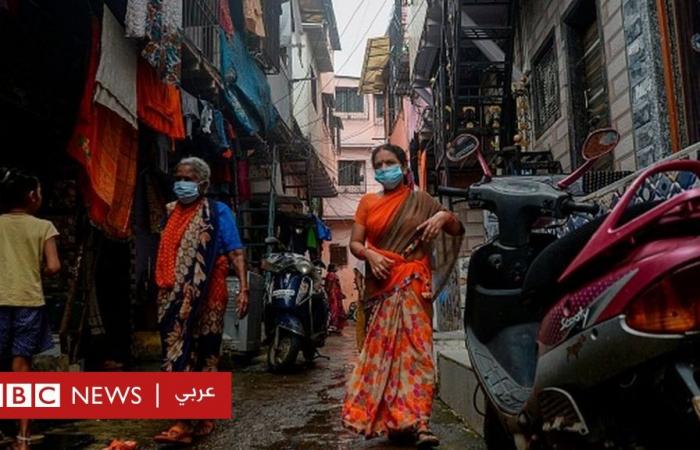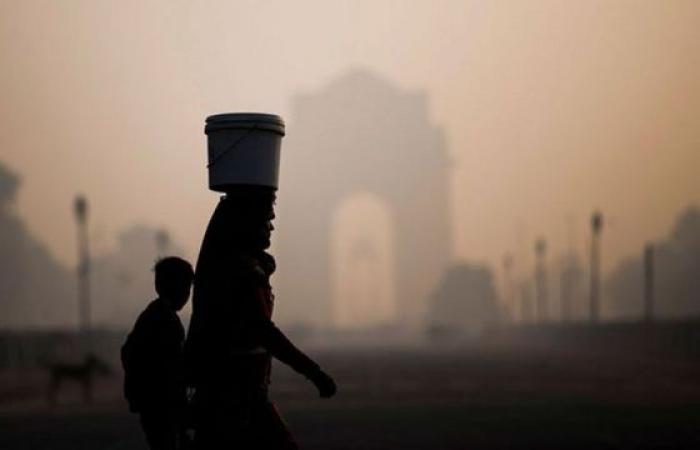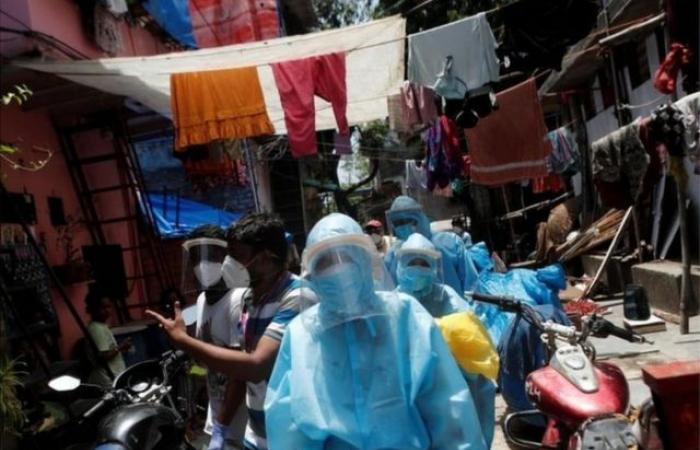- Sotic Biswas
- BBC reporter – India
52 minutes ago
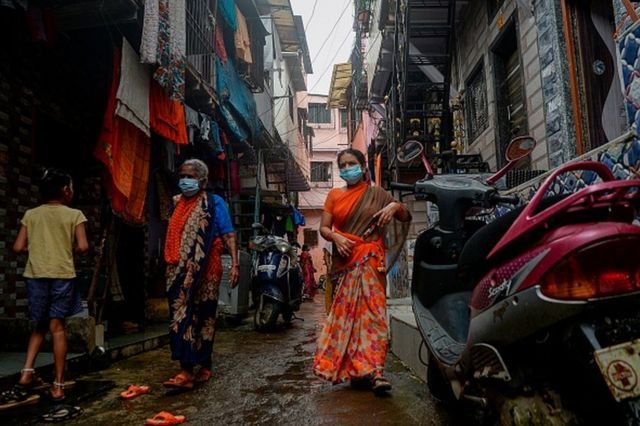
Image Released, AFP
Millions of Indians live in densely populated neighborhoods
There are millions of Indians who do not have access to clean drinking water, consume unhealthy food, breathe polluted air and live in an overcrowded environment.
Researchers have found that this makes them vulnerable to a range of non-communicable diseases such as heart disease, chronic respiratory disease, cancer and diabetes, which would pose a significant disease burden, according to a government report.
More than a million Indians die every year from air pollution.
The World Health Organization says securing safe drinking water, sanitation and sanitation conditions is essential to protect health from COVID-19.
A joint study by the World Health Organization and the United Nations Children’s Fund, UNICEF, found that nearly three billion people – about 40 percent of the world’s population, nearly most of whom live in developing countries – lack “basic handwashing facilities.”
This was enough to raise fears that the Coronavirus could kill people in developing countries, and lead to millions of deaths in countries like India.
Usually, health care, hygiene and sanitation facilities in poor countries are not available as required, and it is often believed that this is a factor contributing to the high incidence of infectious diseases there.
“It was not expected that Covid-19 would have severe consequences in low and middle income countries,” says Shekhar Mandi, Director General of the Council of Scientific and Industrial Research in India.
Indias population accounts for one-sixth of the world’s population and one-sixth of the reported cases. But it is responsible for only 10 percent of the world’s deaths due to infection with the virus.
The rate of deaths due to the Corona virus is less than 2 percent, and this percentage is among the lowest in the world.
And new research by Indian scientists indicates that lack of hygiene, lack of safe drinking water, and unsanitary conditions may have saved many lives from contracting the dangerous Covid-19 epidemic.
In other words, they want to say that people who live in low and middle-income countries may be able to ward off severe cases of the dangerous Covid 19 virus due to their exposure to viruses and germs that cause various diseases since childhood, which gives them stronger immunity against Covid 19 disease.
Both studies – which have not yet been reviewed – looked at death rates per million of the population to compare death rates.
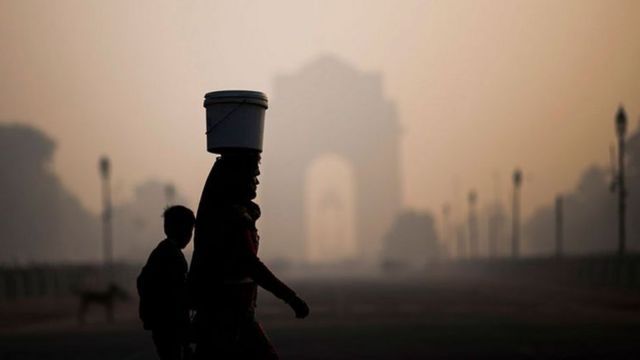
Image Released, Getty Images
More than a million Indians die every year from air pollution
One study compared the available data on the population in 106 that dealt with dozens of criteria such as population density, demography, disease prevalence and the level of health systems. Researchers found that death rates from Covid 19 infection are higher in high-income countries.
“It seems that the poor with low incomes have a better immune response to disease compared to their high-income peers,” said Dr. Mandy, one of the authors of the study.
The second study examined the role played by the microbiome – the trillions of microbes inside the human body – in infection with Covid 19. The microbiome includes bacteria, viruses, fungi and monocytes, and aids in the digestion process, protects against disease-causing bacteria, regulates the immune system, and produces vitamins.
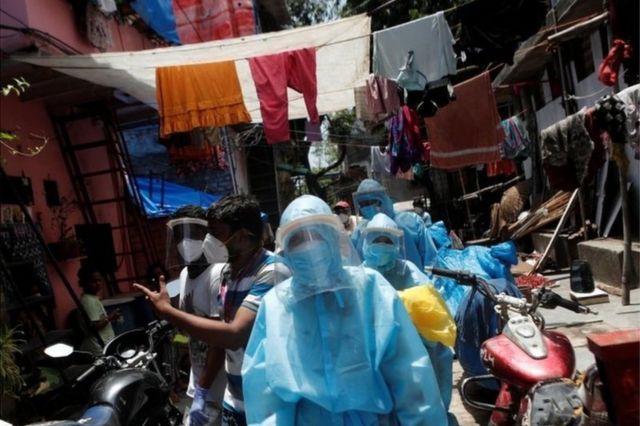
Image Released, Reuters
Dharavi in Mumbai is one of the poorest and most crowded neighborhoods in the world
Praveen Kumar and Pal Chander of Dr. Rajendra Prasad’s Government Medical College examined data from 122 countries, including 80 high and middle income countries.
The two doctors explained that deaths due to infection with Covid 19 are lower in countries that have a greater number of people exposed to various groups of microbes, especially the so-called “gram-negative bacteria.”
These bacteria are usually responsible for acute lung infections, blood, urinary tract infections, and skin infections. But it is also believed to produce an antiviral cytokine – bodies that help fight pathogens – called an antiviral that protects cells from the Coronavirus.
“So far, no account has been taken of whether the Covid 19 virus is affected by the immune status of the population resulting from the microbiome or exposure to environmental microbes,” said Chander Lee.
Scientists believe that ultimately it has something to do with the hygiene hypothesis.
The general idea is that our environment has become completely clean, making our immune systems not sufficiently trained.
According to Matt Rachel, author of Elegant Defense: The Unusual New Science of the Immune System that we are depriving our immune systems of training and activity by focusing on hygiene, it’s not a new idea in and of itself.


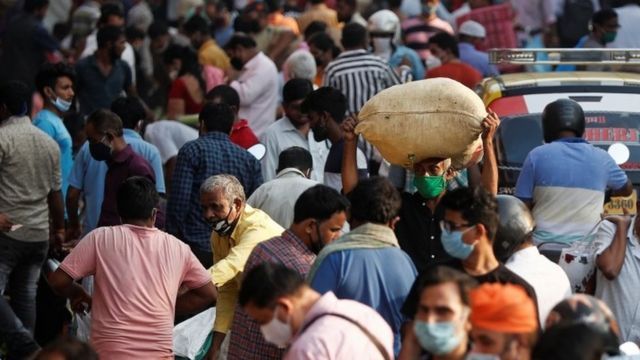
Image Released, Reuters
Only 10% of Coronavirus deaths occur in India
A research study on seasonal allergies published in 1989 found a striking association between the likelihood of children developing this fever and a number of family members.
The study said that seasonal allergic diseases that were avoided in early childhood, spread later through unhealthy contact with older children, or the mother may catch them before birth through contact with their older children.
And another study conducted by the United Nations Organization for Pathological Allergy, quoted by Rachel, showed that migration studies showed that “allergies and immunity types increase as people move from poorer countries to rich countries.”
Smita Ayer, an immunologist at the University of California, believes that the “hygiene hypothesis” for Covid-19 “conflicts with our understanding of immune responses against viruses.”
She added, “However, by realizing that our immune system can confront an enormous number of enemies in relatively quick succession or even simultaneously, we can come up with a model in which immune responses to pathogens encountered previously or currently can influence the immune response to invaders.” Current “.
Scientists say that such studies should be considered merely observational observations. Also, “It should not be inferred from it that we are calling for weaker hygiene methods to deal with future epidemics,” says Dr. Mandy.
Krotika Copale, associate professor of infectious diseases at the Medical University of South Carolina, says the new research takes into account a variety of assumptions that haven’t actually been proven. “They are more hypotheses than scientific facts.”
Also, epidemiologists attributed the low death rate in countries such as India to the fact that young people represent a large proportion of the population compared to rich countries – the elderly are usually more at risk – and it is not clear whether other factors, such as immunity resulting from previous infections with other Corona viruses Is responsible for that too.
It is clear that a variety of reasons can have a low mortality rate.
“We still have a lot to learn about the virus because we have been dealing with it for only 10 months,” says Professor Copale. The truth is, there is much we do not know.
These were the details of the news Corona virus: What is the secret of the low number of... for this day. We hope that we have succeeded by giving you the full details and information. To follow all our news, you can subscribe to the alerts system or to one of our different systems to provide you with all that is new.
It is also worth noting that the original news has been published and is available at eg24.news and the editorial team at AlKhaleej Today has confirmed it and it has been modified, and it may have been completely transferred or quoted from it and you can read and follow this news from its main source.

